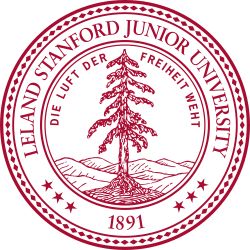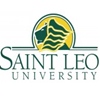Weatherford College is located in Weatherford, Texas, USA. It is a public community college with a long history. The following is a detailed introduction:
History and Overview
Founded in 1869, its history as a community college can be traced back to 1921.
Campus size: The main campus is located in Weatherford, and the branch campus is located near Decatur and Mineral Wells. The campus is moderate in size, providing students with a comfortable learning and living environment.
Student composition: There are 4,705 students in 2024, of which international students account for about 1%.
Academic level
Degree programs: More than 50 associate degree and certificate programs are offered, covering liberal arts and humanities, nursing and nurse practitioner training, and other fields. In addition, there are 4 Bachelor's degree programs.
Teaching quality: The college's courses have been accumulated and improved for more than a century. They are taught by excellent domestic teachers. They have performed well in terms of individual attention to students and teaching quality, and are highly praised by transfer students.
Professional settings
Vocational training majors: including child care training, computer-assisted drawing, computer application, electrician training, health guidance, fire science, heating, air conditioning and ventilation, personal financial management, welding, etc., to help students learn practical skills in a short period of time for better employment.
Academic majors: In the liberal arts, there are majors such as English, history, and philosophy to cultivate students' humanistic literacy and critical thinking ability; in the sciences, there are basic subjects such as mathematics, physics, and chemistry to lay the foundation for students to further study or engage in related scientific research; business majors cover accounting, marketing, business administration, etc., to provide students with knowledge and skills support for employment or entrepreneurship in the business field.
Faculty strength
The college has a team of experienced and high-level teachers. They not only have solid professional knowledge, but also can adopt a variety of teaching methods and means to meet the learning needs of different students, help students better master knowledge and skills, and improve learning effects.
Teaching Features
Practical teaching: Focus on practical operation. Through experimental courses, internship projects, case analysis and other methods, students can apply theoretical knowledge to practice, improve students' practical ability and problem-solving ability.
Small class teaching: The small class teaching model is adopted, and the teacher-student ratio is relatively reasonable, ensuring that each student can get full attention and guidance from the teacher, which is conducive to the interaction and communication between students and teachers, and promotes the personalized development of students.
Campus life
Student activities: The school will organize a variety of colorful student activities, such as concerts, sports competitions, art exhibitions, club activities, etc., providing students with a platform to show themselves and communicate and interact, enriching students' extracurricular life.
Sports: The college has competitive sports programs. Students can participate in various sports competitions such as baseball, basketball, and football. While exercising, they can cultivate teamwork spirit and competitive awareness.
Application and fees
Admission rate: 98%, the admission requirements are relatively loose, suitable for students with different backgrounds and grades to apply.
Tuition: The average annual tuition is US$6,300, which is relatively low compared to four-year universities. In addition, the school also provides students with a variety of scholarships and grants to help students reduce their financial burden.
-

Harvard University
-

Massachusetts Institute of Technology
-

South University
-

University of West Georgia
-

Stanford University
-

Northwest Nazarene University
-

Hawaii Pacific University
-

Shorter University
-

Nova Southeastern University
-

Saint Leo University
-

Mesoamerican University
-

Istmo University
-

Mariano Galvez University of Guatemala
-

Regional University of Guatemala
-

Galileo University
-

Francisco Marroquín University
-

Rafael Landívar University
-

University of the Valley of Guatemala
-

University of San Carlos of Guatemala
-

Technological Institute of Tlaxcala Plateau
-

Golfo University
-

Technological University of South Sonora
-

Technological University of Huejotzingo
-

Tizimín Institute of Technology
-

Chilpancingo Institute of Technology

